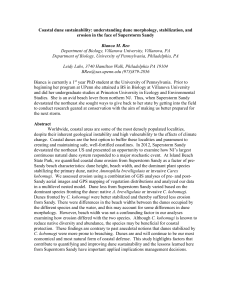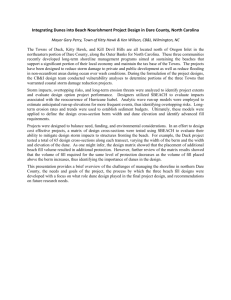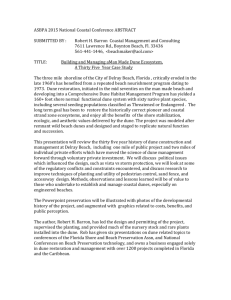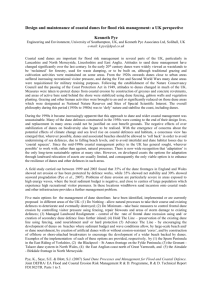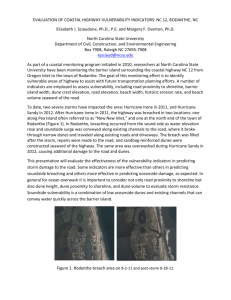Abstract Submission to: Dune Management Challenges on
advertisement
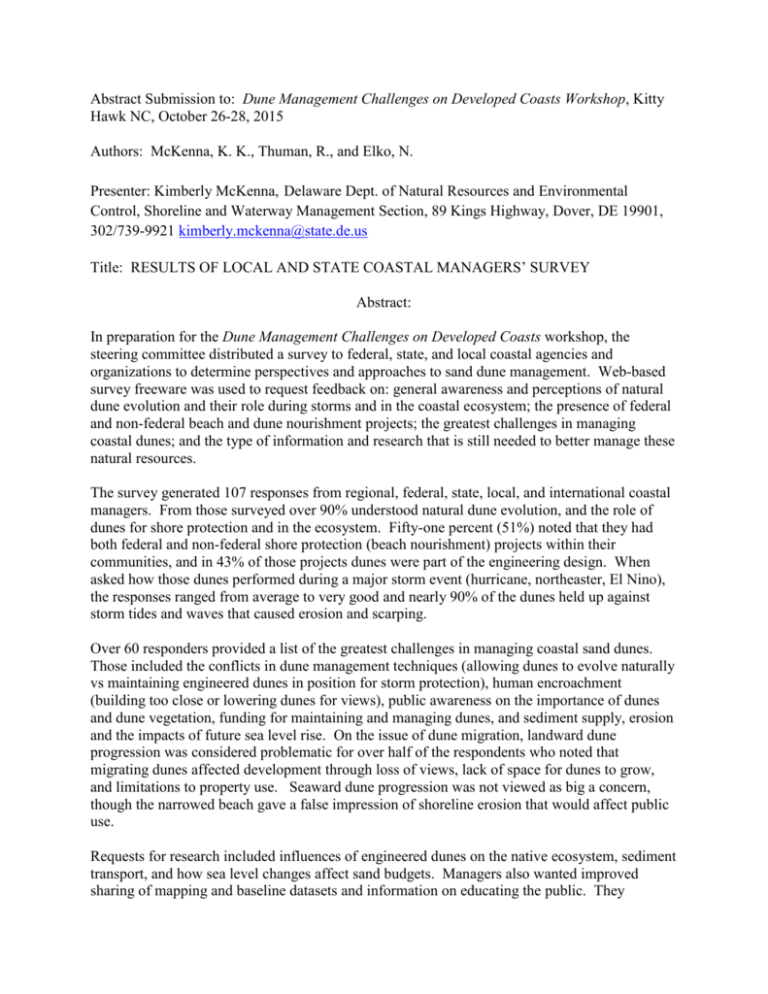
Abstract Submission to: Dune Management Challenges on Developed Coasts Workshop, Kitty Hawk NC, October 26-28, 2015 Authors: McKenna, K. K., Thuman, R., and Elko, N. Presenter: Kimberly McKenna, Delaware Dept. of Natural Resources and Environmental Control, Shoreline and Waterway Management Section, 89 Kings Highway, Dover, DE 19901, 302/739-9921 kimberly.mckenna@state.de.us Title: RESULTS OF LOCAL AND STATE COASTAL MANAGERS’ SURVEY Abstract: In preparation for the Dune Management Challenges on Developed Coasts workshop, the steering committee distributed a survey to federal, state, and local coastal agencies and organizations to determine perspectives and approaches to sand dune management. Web-based survey freeware was used to request feedback on: general awareness and perceptions of natural dune evolution and their role during storms and in the coastal ecosystem; the presence of federal and non-federal beach and dune nourishment projects; the greatest challenges in managing coastal dunes; and the type of information and research that is still needed to better manage these natural resources. The survey generated 107 responses from regional, federal, state, local, and international coastal managers. From those surveyed over 90% understood natural dune evolution, and the role of dunes for shore protection and in the ecosystem. Fifty-one percent (51%) noted that they had both federal and non-federal shore protection (beach nourishment) projects within their communities, and in 43% of those projects dunes were part of the engineering design. When asked how those dunes performed during a major storm event (hurricane, northeaster, El Nino), the responses ranged from average to very good and nearly 90% of the dunes held up against storm tides and waves that caused erosion and scarping. Over 60 responders provided a list of the greatest challenges in managing coastal sand dunes. Those included the conflicts in dune management techniques (allowing dunes to evolve naturally vs maintaining engineered dunes in position for storm protection), human encroachment (building too close or lowering dunes for views), public awareness on the importance of dunes and dune vegetation, funding for maintaining and managing dunes, and sediment supply, erosion and the impacts of future sea level rise. On the issue of dune migration, landward dune progression was considered problematic for over half of the respondents who noted that migrating dunes affected development through loss of views, lack of space for dunes to grow, and limitations to property use. Seaward dune progression was not viewed as big a concern, though the narrowed beach gave a false impression of shoreline erosion that would affect public use. Requests for research included influences of engineered dunes on the native ecosystem, sediment transport, and how sea level changes affect sand budgets. Managers also wanted improved sharing of mapping and baseline datasets and information on educating the public. They preferred direct contact (via email), websites, or journal articles for receiving scientific information and 80% had knowledge or access to effective vegetation planting, fencing configurations, and mitigating windblown sand. The Dune Management Challenges on Developed Coasts workshop will provide a forum for state and local managers to share their challenges with researchers to find overlap and gaps in existing dune research. Recommendations and findings from the workshop on the top challenges and research needs will be published in Shore and Beach.






